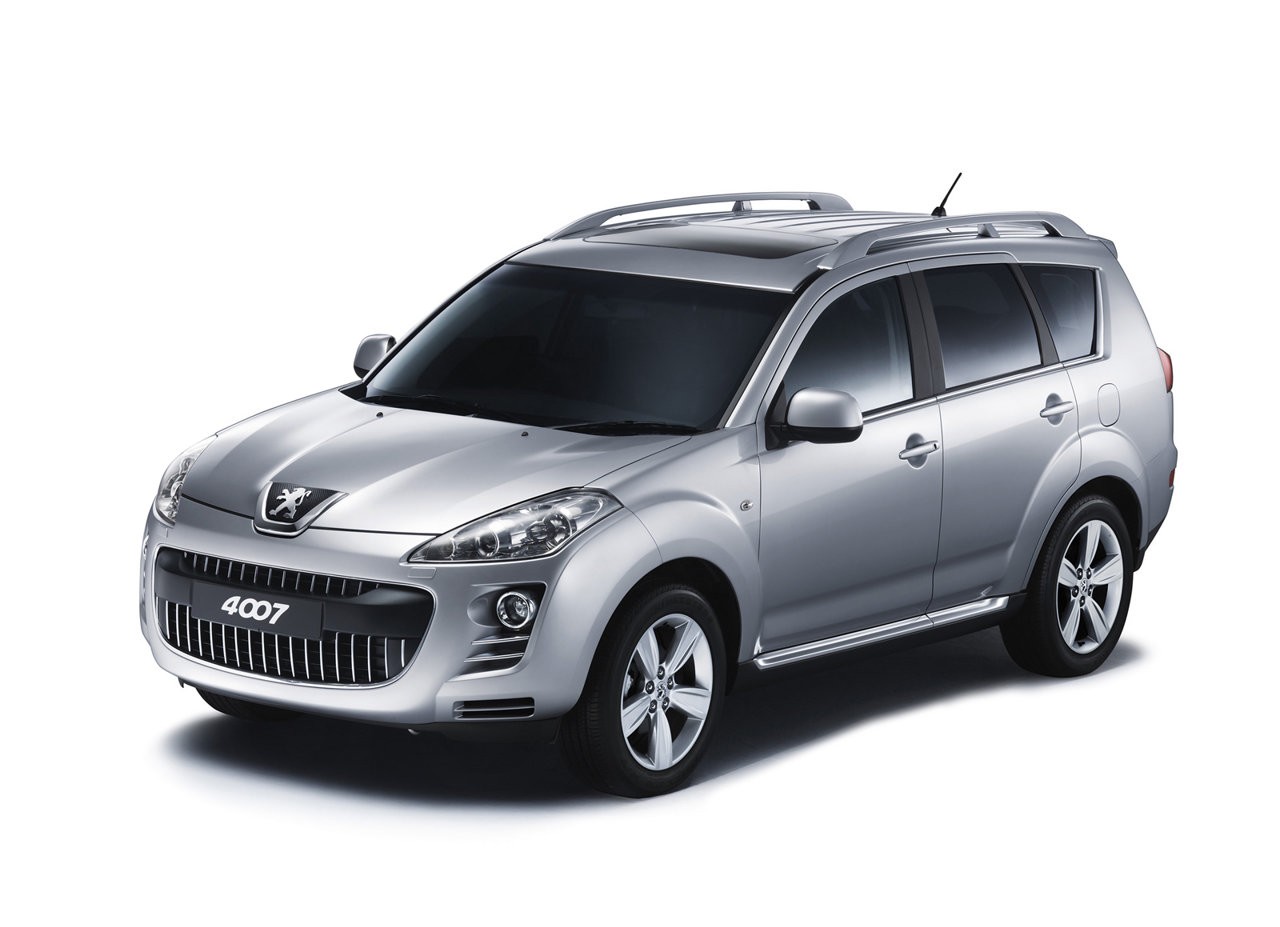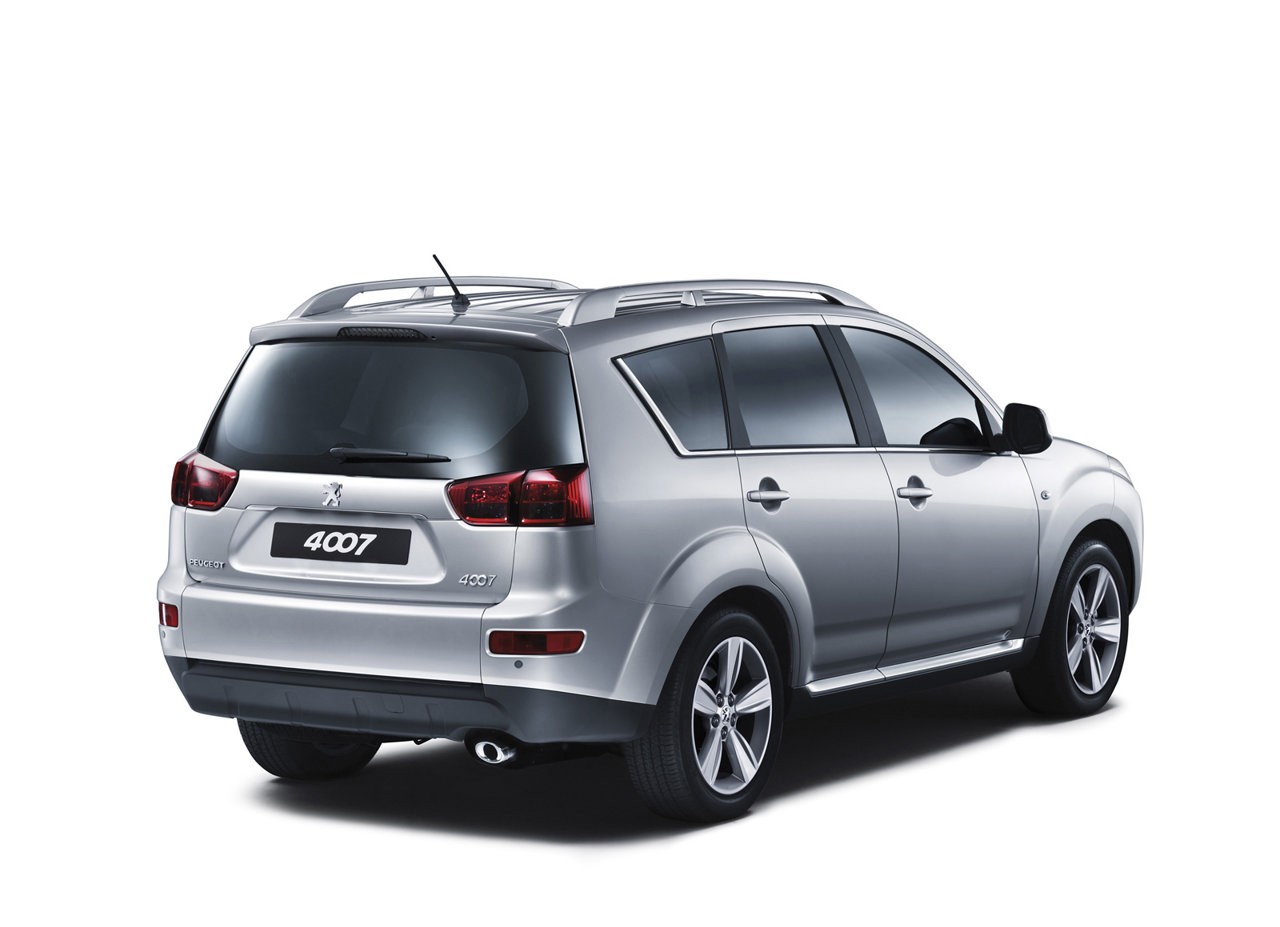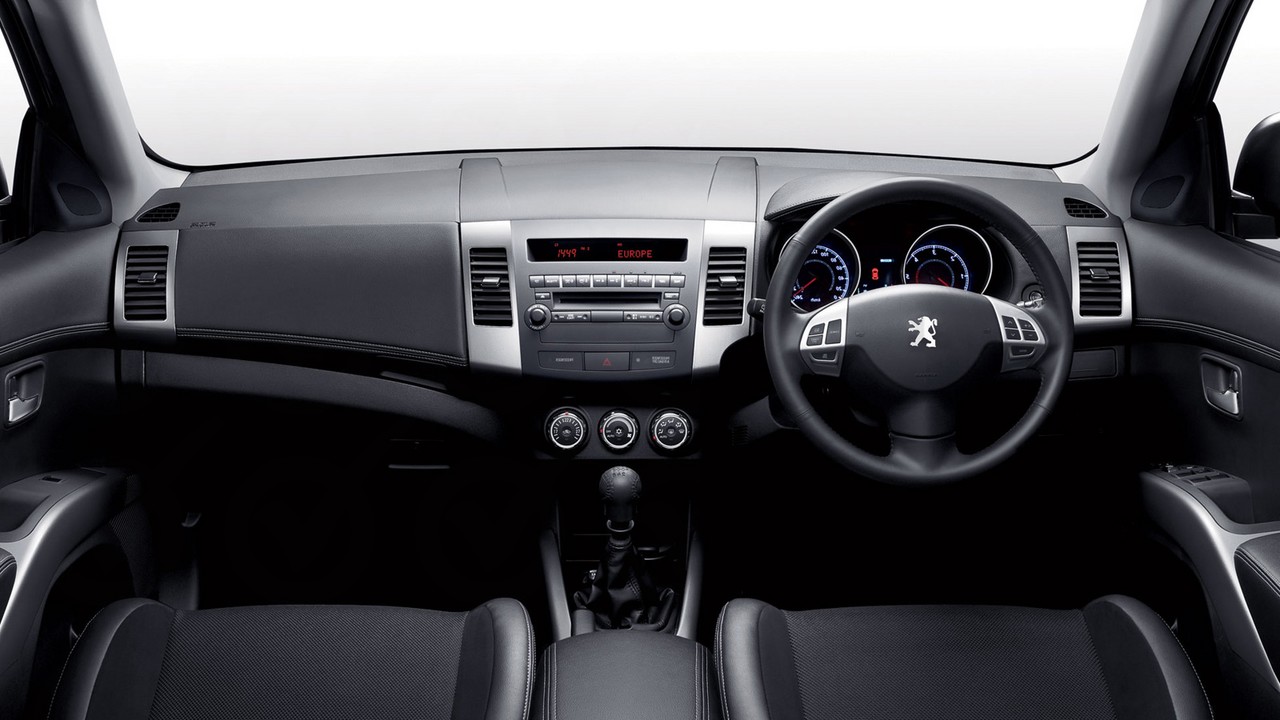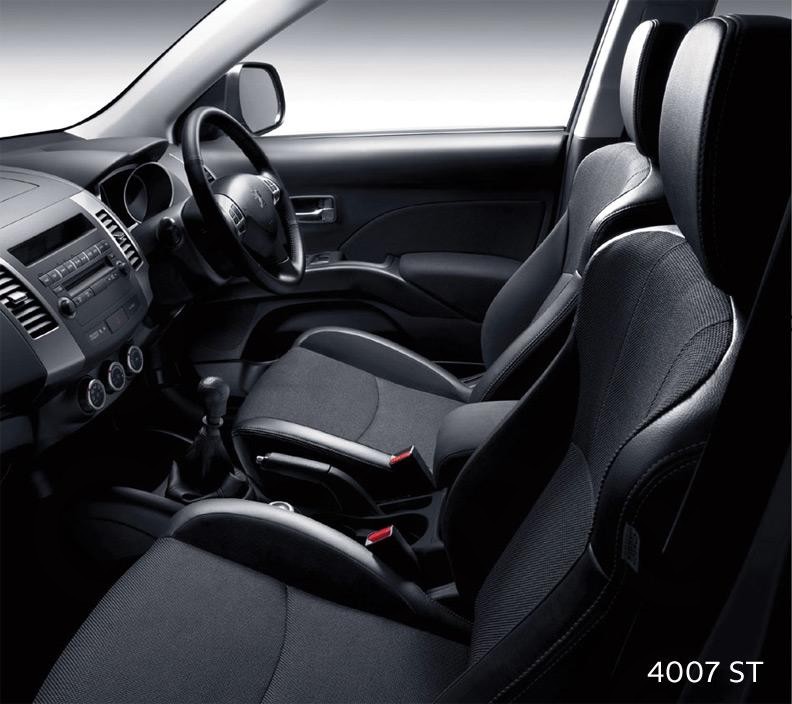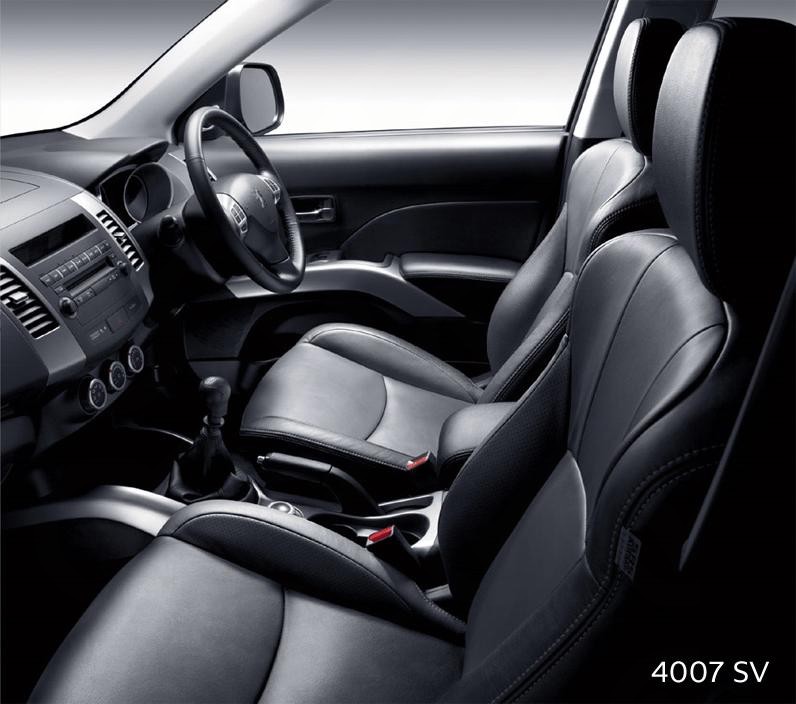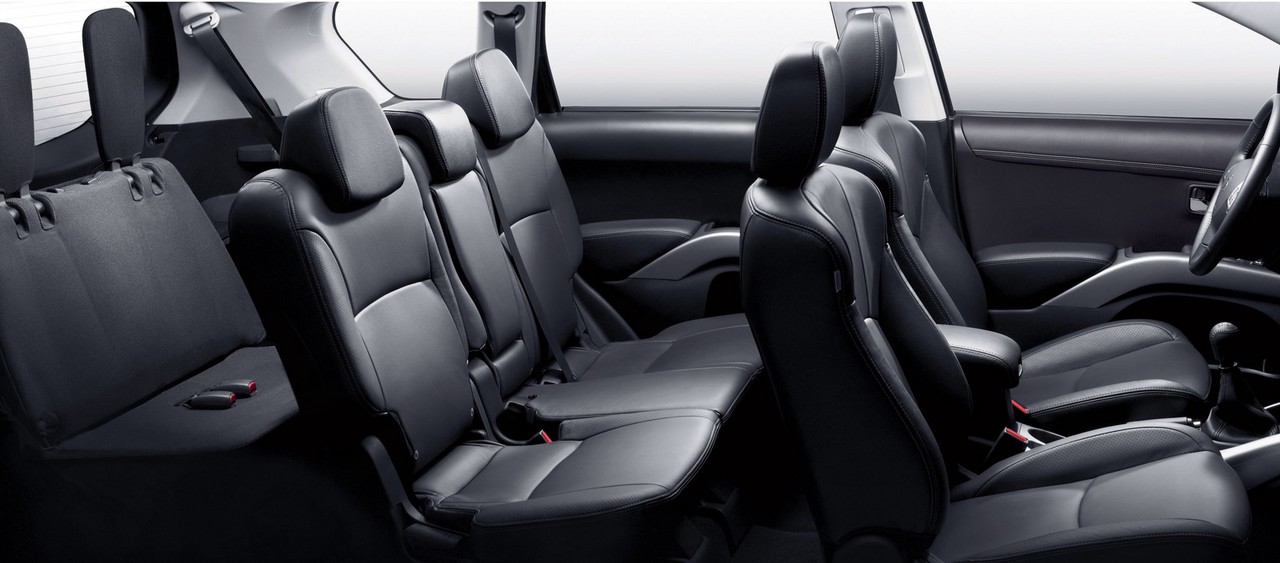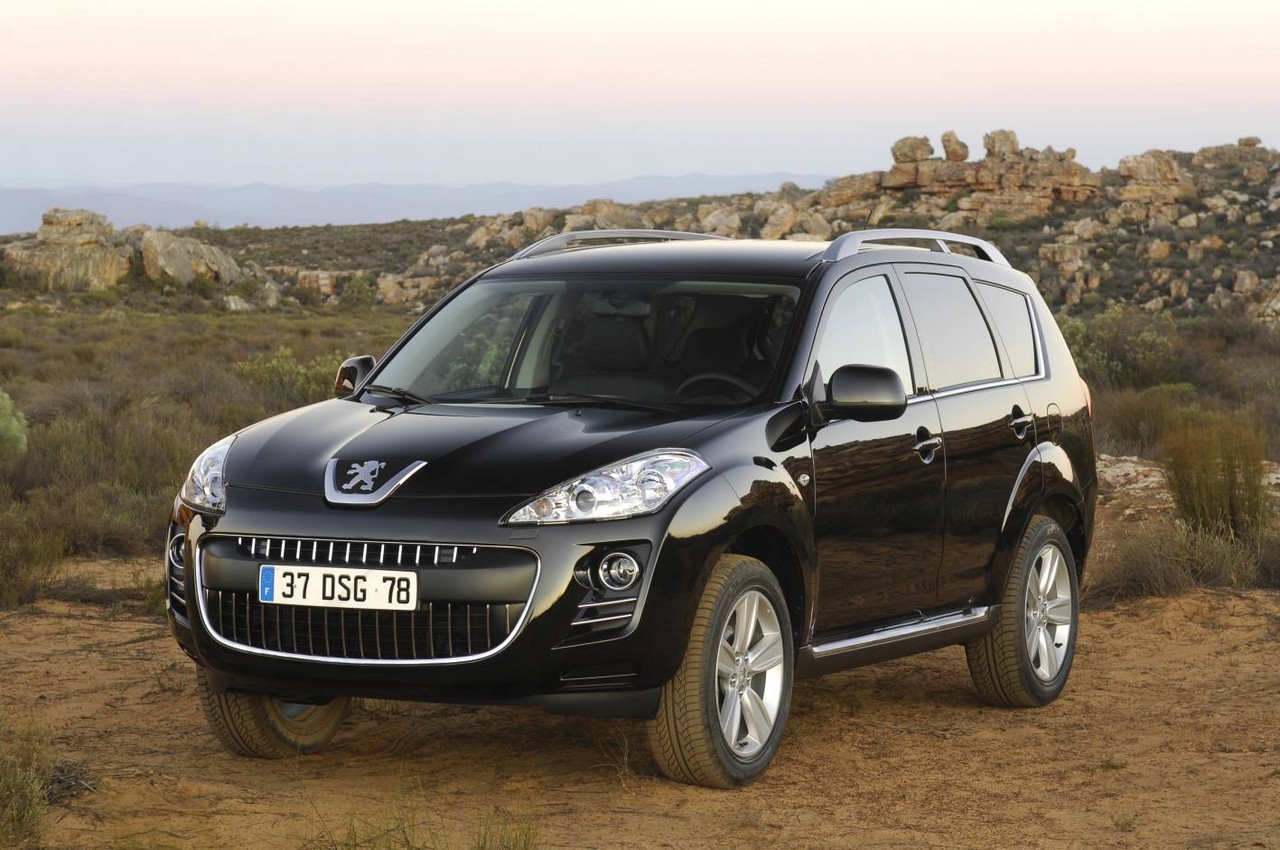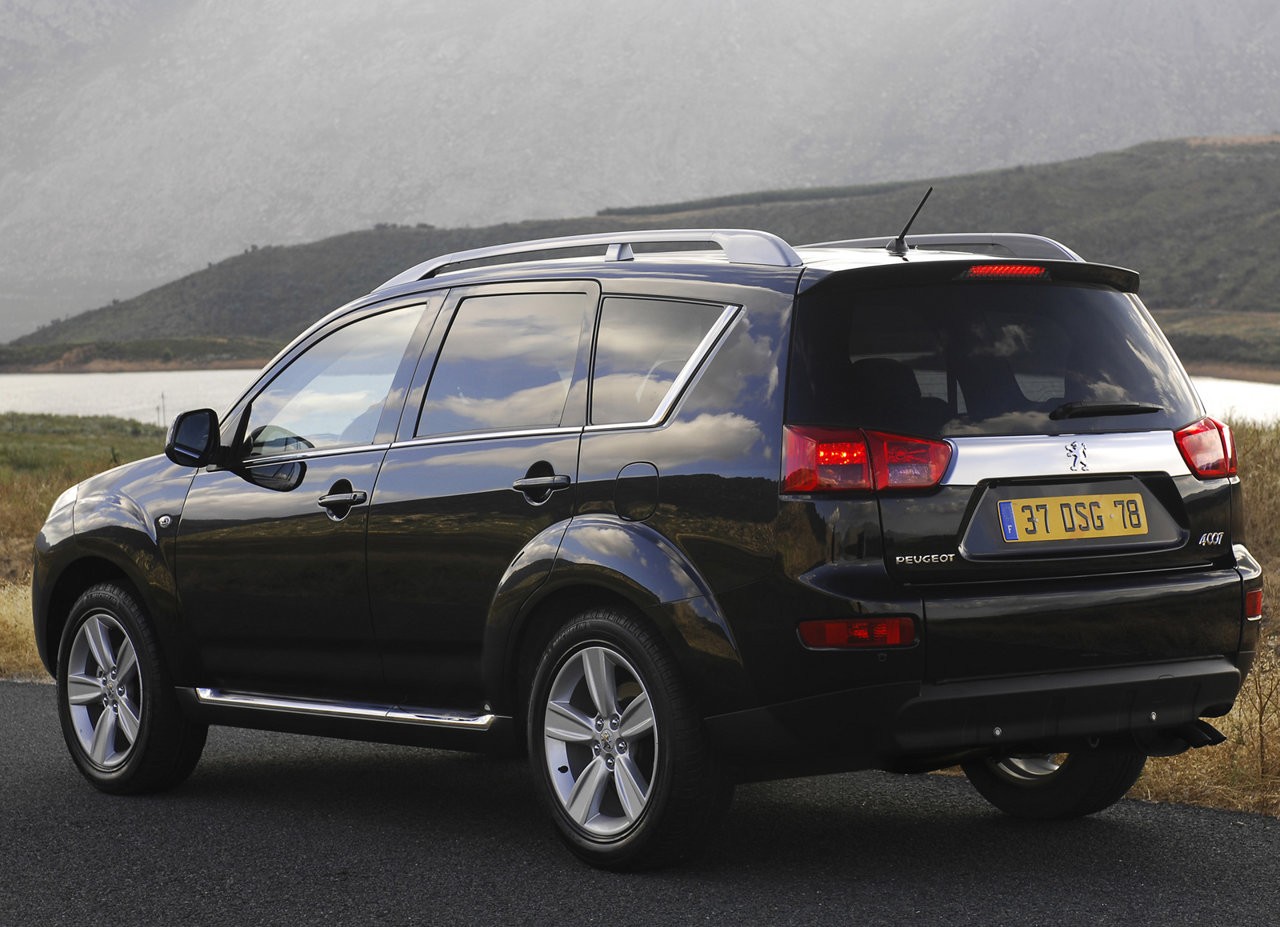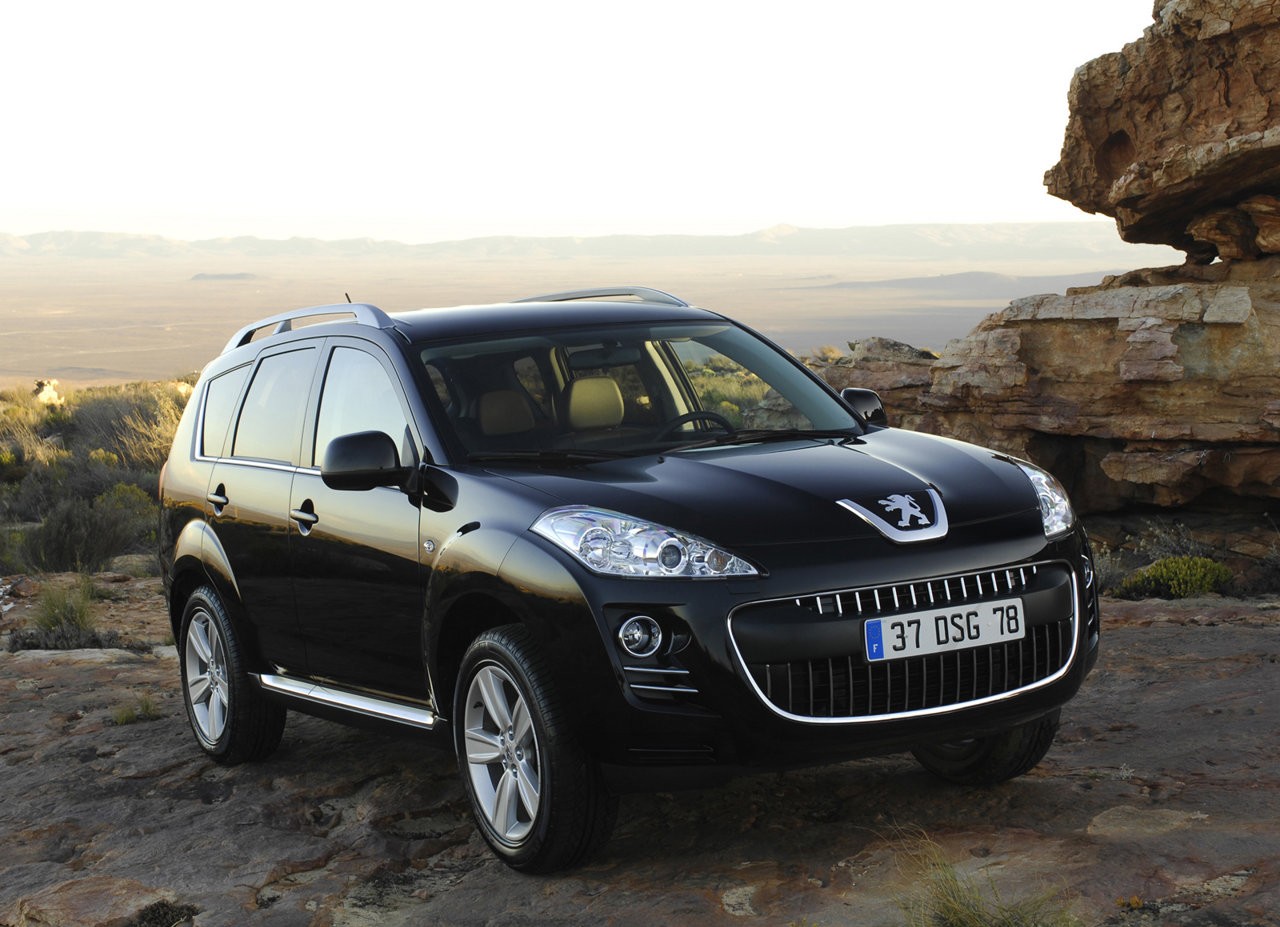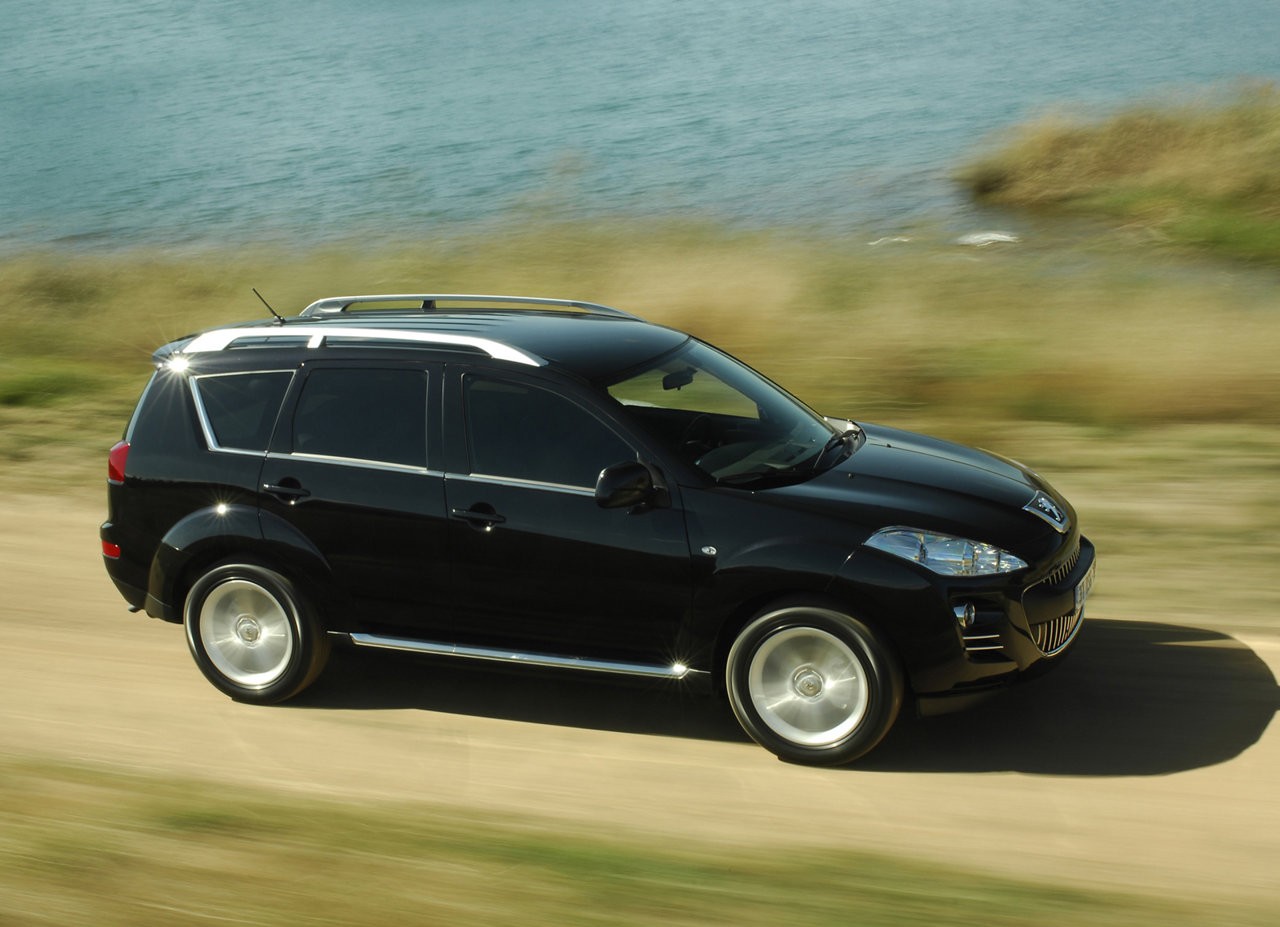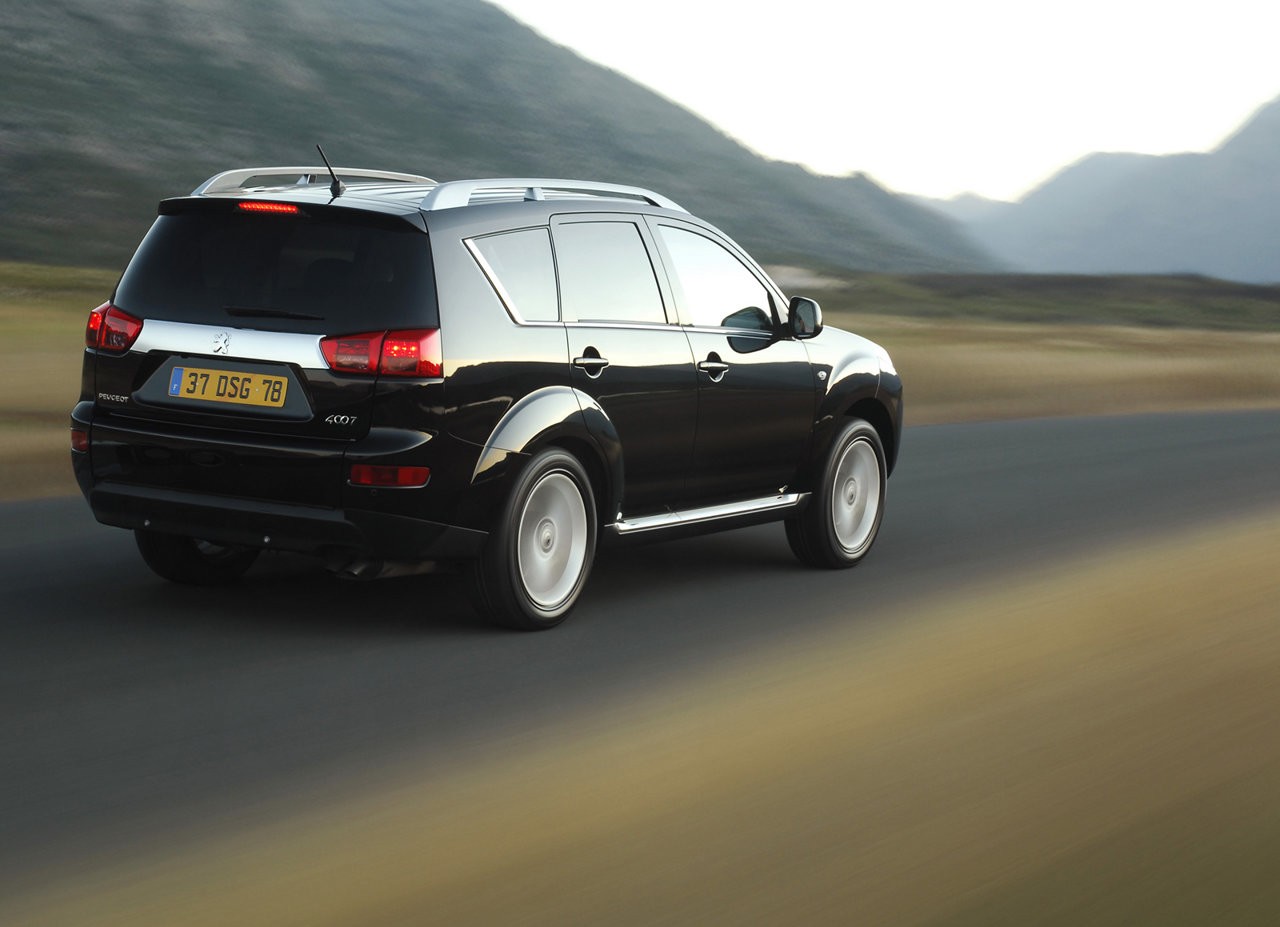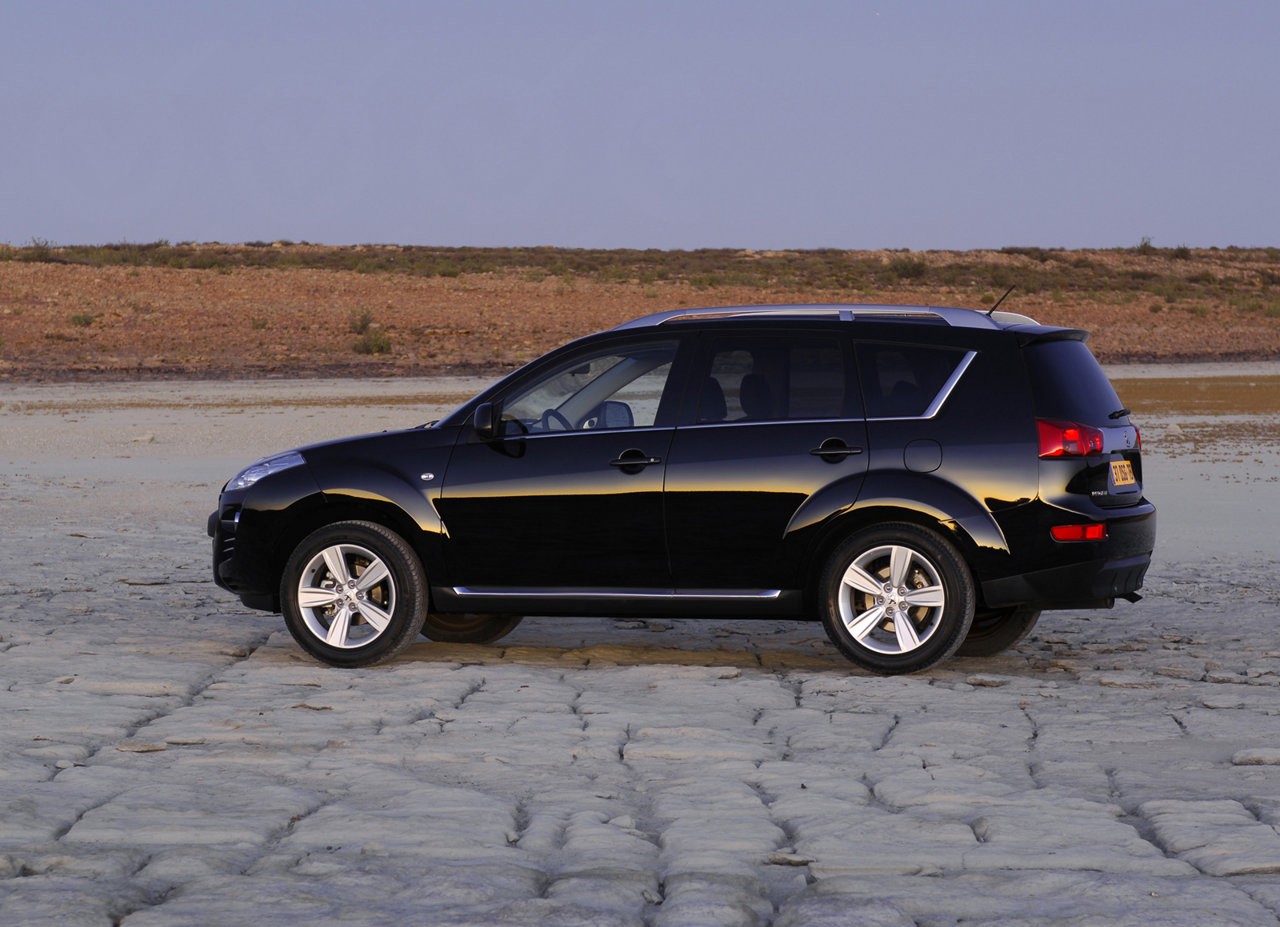
- Frugal 2.2-litre turbo-diesel engine
- Competent ride/handling balance
- Spacious interior (for the front two rows)
- Well-weighted steering provides good feedback
- Turbo lag from diesel engine
- Double clutch transmission can hesistate on take-off
- Cramped third row seats
- Hard dashboard plastics
- Narrow boot
Overview
Released in November 2009, the Peugeot GS 4007 was an all-wheel drive SUV. Manufactured by Mitsubishi Motors in Born, Netherlands, the 4007 was powered by a 2.2-litre four-cylinder turbo diesel engine that was mated to either a six-speed manual transmission or a six-speed dual-clutch unit. The 4007 range consisted of ST and SV variants, though both were available with five or seven seats.
DW12 engine
The 2.2-litre DW12 turbo-diesel engine had common-rail direct injection, a variable geometry turbocharger, double overhead camshafts, four valves per cylinder, a compression ratio of 16.0:1 and a diesel particulate filter (with 180,000 km service intervals).
Dimensions and suspension
Sharing its platform with the Mitsubishi Mk.2 Outlander , the GS 4007 was 4635 mm long, 1805 mm wide, 1715 mm tall and had a 2672 mm long; ground clearance was 174 mm. Furthermore, the 4007 has MacPherson strut front suspension with a 22 mm anti-roll bar and independent, multi-link rear suspension with a 20 mm anti-roll bar.
| Variant | Edition | Seats | Trans. | Engine | Peak power | Peak torque |
|---|---|---|---|---|---|---|
| 2.2 HDi | ST | 5 | 6sp man. | 2.2-litre turbo-diesel I4 | 115 kW at 4000 rpm | 380 Nm at 2000 rpm |
| 5 or 7 | 6sp DCT | |||||
| SV | 7 | 6sp DCT |
AWD system
The 4007 had an ‘on demand’ all wheel drive system which utilised an electronically controlled viscous clutch (positioned ahead of the rear axle). In normal conditions, 85 per cent of the engine’s torque was directed to the front wheels. In the event that traction was lost, however, the clutch would engage to provide a 50:50 front/rear torque distribution. In addition to the automatic ‘4WD’ setting, the driver was also able to select front-wheel drive only (‘2WD’) and ‘4WD Lock’ modes, with the latter providing a fixed 50:50 front/rear torque split.
Safety equipment
Standard safety equipment for the Peugeot 4007 included dual front airbags, front side airbags, curtain airbags for the front and second row, ABS, brake assist, electronic brake force distribution, electronic stability control, front seatbelts with pretensioners and three-point load limiting seatbelts for the front and second row occupants.
Brakes
The 4007 had 294 mm by 22 mm ventilated front brake discs with double-piston calipers and 302 mm solid rear discs.
Features
Standard features for the Peugeot 4007 ST included 16-inch ‘Manyara’ alloy wheels, a six speaker sound system with a CD player, climate control air conditioning, a cooled glovebox, cruise control, front and rear fog lights, automatic headlights, rain-sensing wipers, reverse parking sensors, tilting and sliding second row seats with a 60/40 split and folding capability, a leather-wrapped steering wheel with audio controls, remote central locking, power windows and heated mirrors, a height adjustable steering wheel, two 12 volt power outlets, roof rails, tinted windows, a split tailgate, trip computer and an immobiliser.
Beyond this, the 4007 SV added 18-inch ‘Tanganyika’ alloy wheels, leather seats, heated front seats, power adjustable driver’s seat, xenon headlights with washers and privacy glass for the rear-side windows. Visually, the SV was distinguished by its chrome door-sill kick plates and chrome window surrounds.
Brochure
Specifications
Related links
